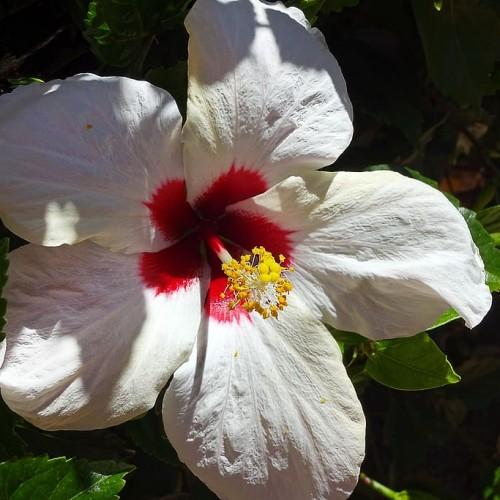
common rose mallow
Hibiscus 'Everest White'
Cycle:
Herbaceous Perennial
Watering:
Frequent
Hardiness Zone:
5 - 9
Flowers:
Flowers
Sun:
full sun,part sun/part shade
Leaf:
Yes
Growth Rate:
High
Maintenance:
Low
Salt Tolerant:
Yes
Tropical:
Yes
watering
Common rose mallow (Hibiscus 'Everest White') is a plant species that requires consistently moist soil throughout the growing season, but not soggy. To keep soil moist, water deeply every 3-4 days when there is no rain. During hot weather and periods of drought, it is important to water more often. If leaves droop or wilt, it is a sign that the plant needs more water. Allow the top inch or 2 of soil to dry out before each watering and water thoroughly once the soil feels dry. Too much water can cause root rot or other complications.
sunlight
Common rose mallow (Hibiscus 'Everett White') should receive full sun, which includes 5 to 6 hours of direct sunlight, in order to thrive. It can tolerate partial shade, but is best suited for full sun conditions as this will allow it to maximize its growth and bloom. If you're planting it during the summer, it's best to place it in an area that receives afternoon shade, as the strong sun can burn its delicate leaves.
pruning
Pruning of common rose mallow (Hibiscus 'Everest White') should be done once a year in late winter to early spring, while the plant is still dormant. For optimal results, wait for the plant to be completely dormant and prune back unruly stems that are larger than 2-3 inches. To ensure your mallow continues to thrive, cut off any dead branches or stems, and prune to shape your plant to maintain a desired size. Although excess pruning can be harmful, be sure to cut away any stems or branches that are crossing, weak, or diseased.
